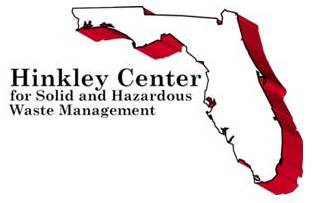Diverting Food Waste From Landfills
| Principal Investigator:
Dr. Ann C. Wilkie BioEnergy and Sustainable Technology Laboratory Soil and Water Science Department University of Florida-IFAS |
 |
| Funding for this project is provided
by the William W. (Bill) Hinkley Center for Solid and Hazardous Waste Management. |
 |
Food waste represents a significant proportion of Florida’s municipal solid waste. Currently the vast majority of food waste is landfilled, where it can create many problems for solid waste handlers including methane emissions, nutrients and organic matter in leachate, and odor and vermin problems. This project examines the possibilities of diverting this food waste from landfills for anaerobic digestion. Anaerobic digestion is a natural, microbial process that breaks down organic matter into biogas and nutrients. Biogas can be used as a sustainable alternative to natural gas, while the nutrients are a source of organically-derived liquid fertilizer.
Year One
There are three main objectives to Year One of this project. First a survey of food waste production will be conducted to determine the amount of food waste that is produced from what sectors of the economy. By analyzing where food waste is produced, it helps to understand how best to implement food waste diversion plans. Secondly a protocol will be developed on how to effectively pre-treat and solubilize food waste prior to anaerobic digestion to increase the overall efficiency of the process. The third objective is to spread public awareness of the process to increase public support for food waste digestion. To do this a portable digester will be constructed and demonstrated at various conferences and events.
Objectives
1) Survey food waste in Florida
2) Conduct food waste pretreatment studies
3) Construct portable digester for demonstration
Year Two
There are three main objectives to Year Two of this project. First, pretreatment experiments based on methodology from experiments in Year One will be completed. Second, waste audits will be conducted at local schools to determine the potential of implementing anaerobic digestion of school cafeteria’s food waste. Third, we will demonstrate anaerobic digestion at one or more local schools, using the portable food waste digester that was constructed in Year One.
Objectives
1) Continue lab-scale experiments to optimize food waste digestion
2) Conduct food waste audits at local schools
3) Demonstrate anaerobic digestion at local schools